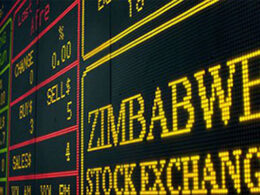According to Robert Sluymer, a technical strategist at RBC Wealth Management, the recent surge in longer-dated Treasury yields needs to reverse before U.S. stocks can resume their rally from the lows of last October.
Sluymer highlights the 10-year Treasury yield’s push above the critical 4.3% level, reaching 4.8% on Tuesday, as prematurely ending an 11-month upswing for stocks that began in the fourth quarter of 2022.
In a client note on Tuesday, Sluymer states that rising interest rates and a rising U.S. dollar (DXY) are major obstacles for equities and need to reverse to establish a bottom.
Analyzing the historical correlation between U.S. stocks and interest rates, Sluymer notes that a move above 4.5%-5% by the U.S. 10-year yield has consistently acted as an important headwind for the secular uptrend in equities.
Additionally, Sluymer discovered that stocks have faced pressure in the past when the 10-year Treasury yield was between 4.5% and 5%.
Market Correction Feared as Treasury Yields Rise
Market analysts are expressing concerns that the equity market could experience a correction if interest rates surpass 5%. However, they emphasize that for any potential market recovery, there must be clear evidence of a reversal in the upward trend of the 10-year Treasury yield.
The Dow Jones Industrial Average (Dow) suffered a significant decline on Tuesday, plummeting 1.3%. This drop marked its worst daily performance since the banking crisis of March. The Dow closed at 33,002, its lowest level since late May, and erased all gains made in 2023, according to Dow Jones Market Data.
The S&P 500 index (S&P) also experienced a notable decline, falling by 1.4% to reach 4,229, its lowest finish since June 1. Likewise, the Nasdaq Composite Index (Nasdaq) ended 1.9% lower at 13,059.
Analysts have been closely monitoring the 4,200 level for the S&P as a crucial test of support. In addition, they have identified another key support level near 4,000. Breaking below this level would indicate that the anticipated rebound of the 2023 cycle is failing, according to experts.
It’s worth noting that a market correction typically refers to an index retracing at least 10% from its recent peak, but no more than 20%.
Related: Entire U.S. Treasury yield curve moves toward or above 5%, raising risk something may break




